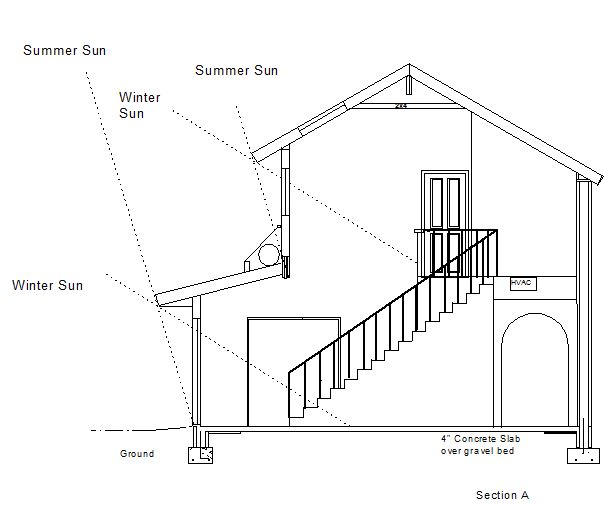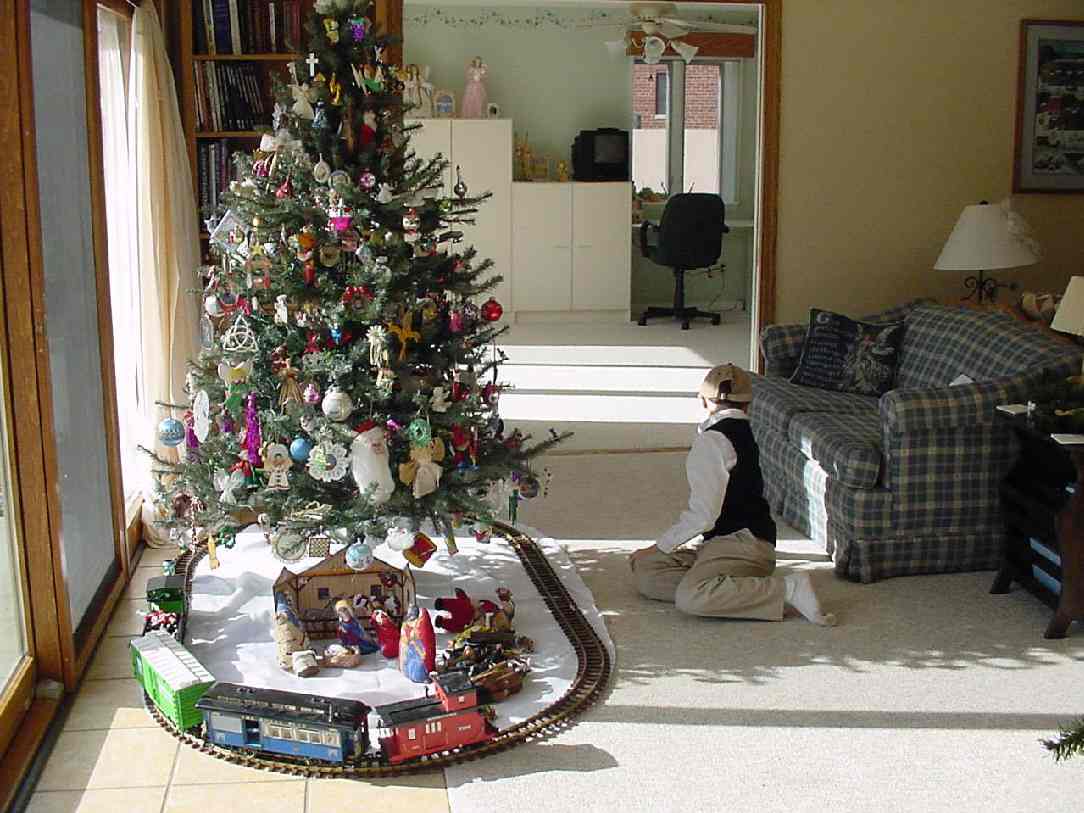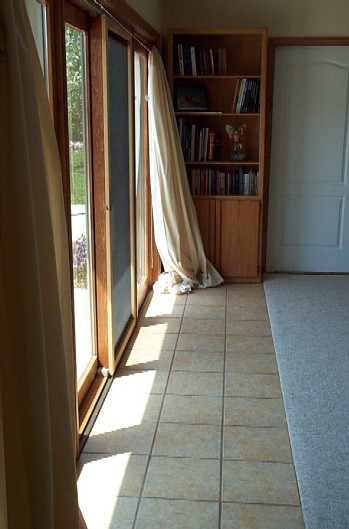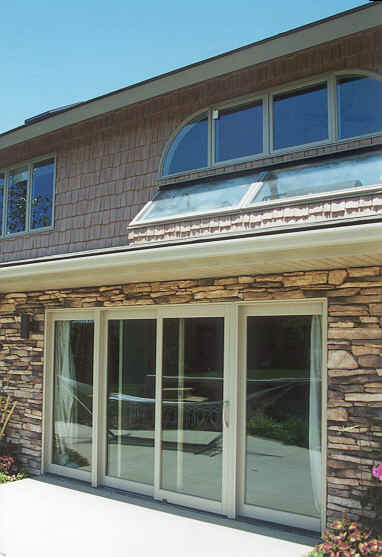|
A
passive solar home works by taking into account the movement of the sun in
the different seasons. Like God's grace it is a free gift for all of us to
use.
If we rotated the house 90 degrees the calculated average December heating
bill would climb from $25 to $85, and summer air conditioning would rise
from $30 to $95/month. So orientation is everything with passive solar design.
|
 |
This is one of the better pictures that shows how the sun
moves throughout the seasons.
Knowing this is key to the design of your house and you will see below
how we used the concepts.
The picture came from The Passive Solar Energy
Book by Edward Mazria. The book unfortunately has been out of print
but I heard it may be reprinted.
|
 |
As you can see from this section view of the house the
winter sun penetrates deeply making it exceptionally bright in December
and January. This also adds valuable heat reducing our
heating bill. But the summer sun is shaded by the overhangs as it never hits the
glass reducing air conditioning loads. We tried to make sure the solar
pre-hot water heater receives sun all year. |
 |
The sun rises and sets about 20 degrees to the south of
the east-west axis in winter. Yet it rises and sets about 10 degrees to the
north of the east-west axis in the summer. This varies by latitude
and is for our area at 36
degrees N latitude. So in the winter the front of
the house is always warmed by the sun but yet the house itself shades
the patio in the summer evening and mornings.
|
|
Below are interior shots showing the sun's movements through the year |
 |
In December and January the sun penetrates deep within
the house. This contributes to both a very bright home and we gain a
lot of heat on sunny days. The sun penetrates the deepest on the
winter solstice on Dec 21st. |
 |
Even in November and February the sun
penetrates deep in the house.
This warms it through the day and with good insulation and a warmed
concrete floor the heat last most
of the night as well. |
 |
The sun begins to shine brightly into the the house at the
end of September and is waning by mid March.
This is the sun's position at noon in September and mid March,
the spring and fall equinox.
|
 |
Here is the sun in late April and mid August near noon.
As you see only a little sun is coming into the house.
We have about 9% of our floor area in south facing glass.
About 40% of our south wall is glass but only 3% of the other wall
areas are glass.
|
 |
From mid May
through early August no sun shines in. This picture was taken
mid-July around noon. The shading keeps the house from overheating in
the hot summer months. No solar gain means less air conditioning. |
 |
In June and July the south facing windows are complete
shaded. This lets plenty of indirect light in the house but significantly
reduces summer heating and air-conditioning bills.
Notice we allowed for the solar pre-hot water heater to be
exposed in the noon sun. This provides a good 1/3 of our hot water
year round.
|
 |
By mid-May through mid-August the patio is shaded by 6.
We are planting several trees on the west side to give
additional summer afternoon shading.
One disadvantage of this orientation is the house shades the solar
water heater reducing it's effectiveness in the summer.
|
 |
In contrast a neighbors house faces west and receives a lot
of direct afternoon sun driving their electric bills to more than 3 times higher than
ours. The bright afternoon sun forces them to often close the blinds as
well. |
